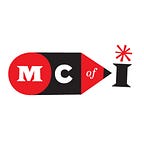Picture This
--
Our blog has been slightly neglected, but it will serve a new purpose in the coming months. MCOI was started during lockdown following a chat among several Maltese illustrators scattered all over the world (and a few in Malta too). We wanted it to happen because there was a need for it to happen, and surely enough, two years later we are still (slowly but surely) still going. Still giving opportunities to MCOI members, still churning out projects and enjoying fantastic feedback from those we have worked with. Each time I get an email with a ‘thanks for doing this’ and a ‘thanks for the opportunity’ I know that we must keep going.
That said, MCOI is not a business, it’s not an organisation either. It’s an unofficial social media group, and because of that I don’t like to push anyone to work on MCOI projects. If an admin/board member happens to have a sliver of time left in their busy day, I am thankful that they help out. Our initial idea was to apply for funding, but while that is on the back burner, something else came along that I think is more faithful to the original purpose of MCOI.
Having returned from the UK to Malta, I’ve started lecturing again. After a brief chat with a colleague I was told that MCAST have started a research program. (Aha!) This was the perfect opportunity to find a slot to work on MCOI without turning it into a business and keeping the community together with no strings attached.
Thankfully my research has been approved and I intend to launch another MCOI annual this year that is supported by a paper. I therefore thought I would use this blogging platform to put updates on my research, without it being too boring I hope.
As with most papers, I’m starting out with a Literature Review and I’ve decided to start reviewing an easy peasy fun book by Molly Bang; “Picture This; How Pictures Work”. Picture this is all about Visual Literacy, explained in the simplest possible form. Bang takes the classic story of ‘Little Red Riding Hood’ and depicts the narrative in minimalistic geometric shapes, each time explaining her reasoning behind every single visual decision. Why are diagonals so dramatic? Why are curves soothing and calming? How does the structure of a picture affect our emotional response?
“If a little red triangle represents Little Red Riding Hood, how might I show her mother?”
Bang explains that by showing the mother as a larger red triangle, the mother is taking attention away from the main character, so she decides on purple (which has red in it, so it makes sense as they are related). The mother needs to be softer, so the triangle is swapped for an abstract shape that is somewhere between a triangle and a circle. In this way, balance has been achieved but the focus is still on Little Red Riding Hood.
Bang then goes on to depict the woods, with the trees first being triangular (she then decides otherwise as they are similar to LRRH). She decides on long black rectangles and later decides to tilt some of them to make the woods feel less reliable, and thus showing that LRRH is in danger and that something is about to happen.
Now, the idea behind my paper isn’t exactly about visual literacy, but I like starting with simple books like this one before jumping onto the more intellectual ones, just because it helps me focus on the subject at hand.
“We see pictures as extensions of the real world” states Bang, and
“When we look at a picture, we know perfectly well that it’s a picture and not the real thing, but we suspend disbelief. For a moment, the picture is “real.”
Now this gets me thinking about my subject, which is all about documenting contemporary Maltese illustration. I want to observe and want to know what is happening currently in Maltese illustration. Why are we drawing what we are drawing? I want to see how the rapid ever-changing landscape of our small island is reflecting on this particular medium.
So, going back to Bang’s quote, how are local illustrations working as extensions of the real Malta? Are they depicting the real thing? Or something that was? Something idealised? I’m still right at the beginning of my research of course, but many questions are coming up and I hope I will be able to answer a few of them in the coming months.
